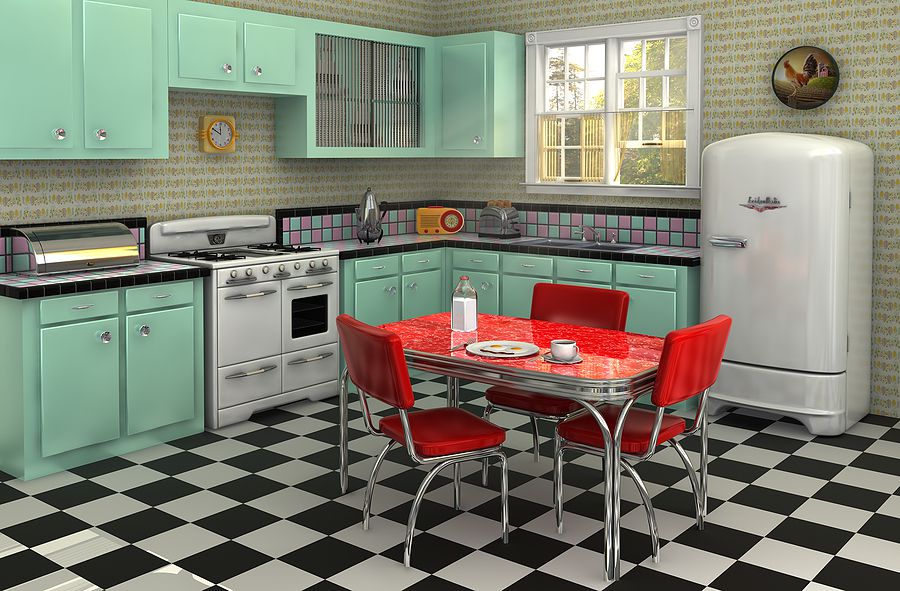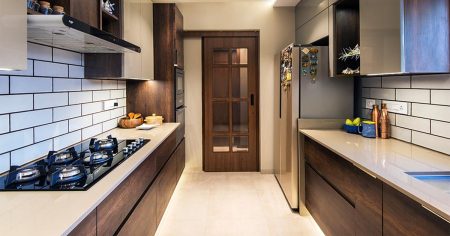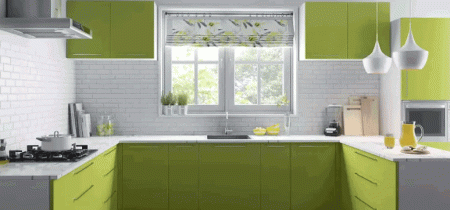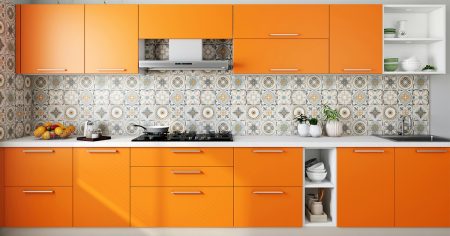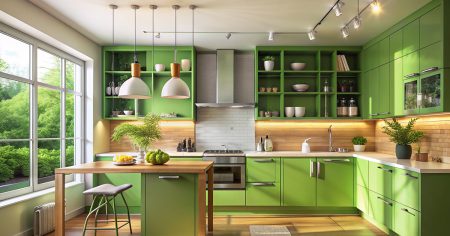Linoleum flooring is a tough, durable, stain-resistant, anti-microbial, and eco-friendly building material—all characteristics that make it perfect for a kitchen. However, it fell out of popularity in the early 1950s, usurped by slightly less expensive and more interesting vinyl and rubber tiling products. By the 1950s, linoleum was suffering from an obvious perception problem. By this time, linoleum had been a standard flooring material in kitchens for more than 80 years, and while it was very durable, people were starting to get tired of the standard old look. By contrast, rubber, vinyl, and other innovative flooring materials were just coming onto the market with exciting new designs, and they appealed greatly to consumers who wanted to be on the cutting edge.
This was exacerbated by the fact that there were a number of low-grade materials being manufactured and marketed under the linoleum name. When these bargain products started to warp, crack, and fall apart, it was linoleum that received the blame.
Recently, however, there has been renewed interest in linoleum as a residential flooring material, thanks to consumers attracted to the fact that linoleum is a natural material without the environmental drawbacks of synthetic vinyl flooring. Although linoleum is still more common in high-traffic commercial applications, it is increasingly common in residential construction, including kitchens.
There are several issues to keep in mind if you are considering linoleum flooring for your kitchen.
Benefits of Linoleum Flooring in a Kitchen
There are several distinct advantages to using vinyl flooring in a kitchen:
- An eco-friendly material: Linoleum is made mostly from linseed oil, wood flour, cork powder, and sometimes limestone dust added for strength. Most components are renewable and they do not pollute landfills. The materials break down easily in landfills, unlike vinyl. Linoleum can also be burned without producing harmful fumes in the way that vinyl does.
- Scratches are less visible: Unlike vinyl, linoleum is a solid material top to bottom throughout its thickness, and thus scratches and gouges are not as readily apparent as they are with vinyl.
- A resilient surface: The presence of cork dust in linoleum creates some “give” and bounciness underfoot, which can be an important consideration if you spend a lot of time on your feet in the kitchen.
- A durable surface: Manufacturers often warranty linoleum for 25 years, and in practice, you may see this flooring last even longer; 40-year lifespans are not uncommon.
- Ideal for retro styles: Because it has a long and varied history, this material fits in with classic or retro designs better than does vinyl, rubber, and other more modern flooring choices. Many people believe that the recent resurgence in linoleum’s popularity is due to the natural cyclical nature of design trends. This is an ideal flooring choice where a mid-century modern design feeling is desired.
- Easy maintenance: Like vinyl, linoleum is fairly easy to clean and care for, requiring little more than occasional sweeping and damp-mopping. For stains, spot-cleaning can be achieved with a pH-balanced, non-abrasive cleansing agent. While it is not recommended that you immerse a linoleum floor in water, it can be cleaned with a damp mop about once a month.
- Inexpensive: Compared to hardwood or ceramic tile, linoleum is a relatively inexpensive flooring material—particularly when you factor in its long life. The material alone averages $2 to $3.50 per square foot, with professional installation adding about $3 to $10 per square foot, depending on labor costs in your area. Linoleum is slightly more expensive than vinyl, but it is a good bargain when you consider its longevity.
Drawbacks to Linoleum Flooring for Kitchens
- Susceptible to moisture damage: Water is the biggest problem when using linoleum in a kitchen. Made from natural material (primarily linseed oil, cork powder, and wood flour) the surface of linoleum is porous and can absorb spills and liquids.
Warning
Left unattended, spills can damage linoleum irrevocably. Sealing is essential for preventing damage from water and staining agents. Linoleum is not appropriate for use in a kitchen that is below-grade, where moisture seeping up from a concrete slab can affect it.
- Must be sealed regularly: When a linoleum is installed in a kitchen, it should be coated with a clear acrylic sealer as soon as the application adhesives have dried and before the floor is walked on. And the floor needs to be resealed annually in order to maintain its quality and appearance. The annual application of an acrylic sealer should make a linoleum kitchen floor resistant to stains and impervious to most water penetration. Allow the sealer to dry completely, until it is no longer sticky to the touch, before use. For new floors or kitchen floors that have not been treated in several years, the second coat of sealer can be applied to ensure complete coverage.
- Installation is more difficult: Linoleum is a thicker sheet material than vinyl, and it can crack or break if it is not installed carefully. It is less suitable than vinyl for DIY installation.
- Can be dented: Because it is somewhat soft and resilient, linoleum flooring can be dented by furniture legs or even by sharp shoe heels. Sharp objects can cut this material.
- Darkens or yellows with age: When exposed to constant sunlight, linoleum can change color slightly. Protective coatings applied by the manufacturer can help prevent this.
Bottom Line
Linoleum flooring, once considered a tired, outdated material, is once more being regarded as a great kitchen alternative for homeowners who like its retro appeal or eco-friendliness. Linoleum is a very durable and forgiving floor material for kitchens, provided you take precautions for sealing it and keeping it clean and dry.
Read the full article here







